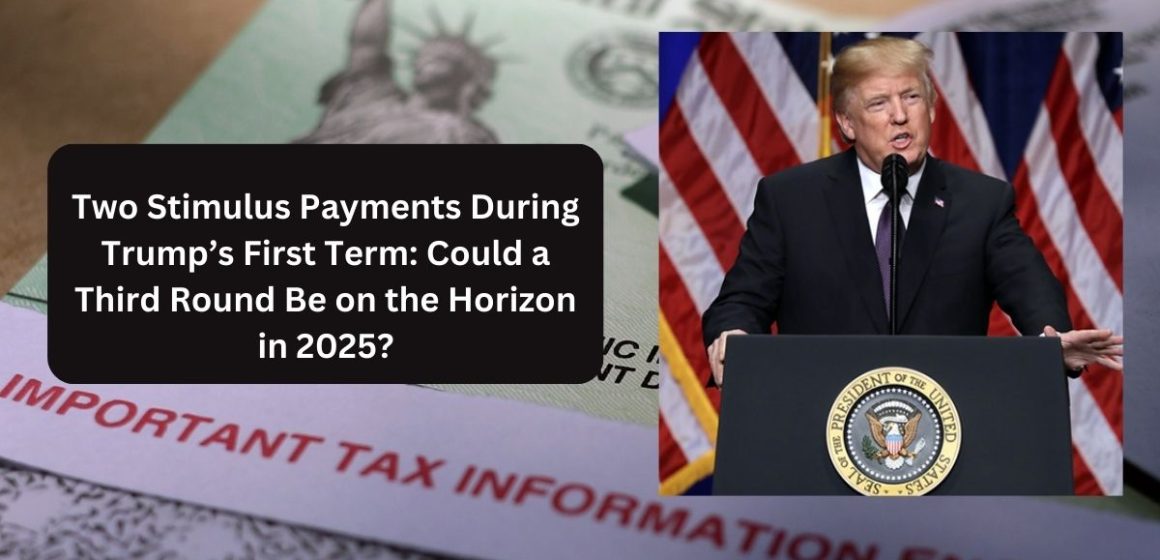As Donald Trump contemplates a possible return to the White House, many Americans wonder whether another stimulus check might be on the horizon. During his first term, Trump authorized two rounds of direct payments to help ease the economic strain caused by the COVID-19 pandemic.
The first round, issued in March 2020, provided up to $1,200 per person, followed by a second payment of $600 in December 2020. These payments offered crucial relief to millions during a time of unprecedented economic hardship.
However, the economic landscape has changed significantly since those days. With the current economic indicators—such as unemployment rates and stock market performance—suggesting that the emergency has passed, the likelihood of another round of stimulus checks under Trump’s leadership remains uncertain. Additionally, inflation concerns, partly driven by previous stimulus efforts, have shifted the political focus away from direct financial assistance.
A Look Back at Previous Stimulus Checks
During his first presidency, Donald Trump signed two major stimulus payments into law:
| Stimulus Round | Payment Amount | Date Issued |
|---|---|---|
| First Stimulus Check | Up to $1,200 | March 2020 |
| Second Stimulus Check | Up to $600 | December 2020 |
These checks, designed to counter the economic impact of the pandemic, were followed by a third round of payments of up to $1,400 per person in March 2021, authorized by President Biden under the American Rescue Plan Act. While these payments provided much-needed financial relief, they also sparked concerns about their role in fueling inflation in the years that followed.
Trump’s Economic Proposals for His Potential Second Term
While a new round of stimulus checks is not currently part of Trump’s agenda, he has proposed several economic measures aimed at reducing the financial burden on working- and middle-class Americans. These policies focus on tax reductions and financial relief through different mechanisms:
- Eliminating Federal Taxes on Tips, Overtime, and Social Security Payments: This proposal aims to increase the take-home pay of workers in service industries and those working overtime hours.
- Tax Incentives for American-Made Car Purchases: Trump suggests offering tax breaks to car buyers who finance American-made vehicles, potentially boosting domestic production.
- Affordable In Vitro Fertilization (IVF): To address the high cost of IVF, Trump has proposed subsidies or mandates for insurance coverage, making it more accessible for families seeking reproductive assistance.
- Removing the SALT Cap: Trump has pledged to eliminate the $10,000 cap on state and local tax (SALT) deductions, which would benefit residents in high-tax states like New York and New Jersey.
These proposals represent a shift away from direct payments, focusing instead on tax benefits and incentives to promote economic growth and increased consumer spending.
Why a New Stimulus Check is Unlikely
Stimulus checks are typically issued in times of severe economic distress, such as high unemployment or a major recession. The current economic situation differs significantly from the crisis conditions seen during the pandemic:
- Economic Growth: The stock market is performing well, indicating economic resilience and growth.
- Low Unemployment: With unemployment rates at a relatively low 4.1%, there is less immediate need for widespread government assistance.
- Ongoing Inflation Concerns: Previous stimulus payments, particularly the ones issued in 2021, have been criticized for contributing to inflation, which peaked at 9.1% in mid-2022. Though inflation has moderated, there are still concerns about further inflationary pressure from additional direct payments.
These factors make it less likely that there will be significant support for another round of stimulus checks, especially among Republican lawmakers, who have criticized previous stimulus measures for their role in inflation.
The Political Landscape and Stimulus Support
The current political environment also suggests that a new stimulus check is unlikely. Both the House and Senate are controlled by Republicans, many of whom oppose further direct payments. Their primary focus is on controlling inflation and reducing government spending, which is at odds with the idea of issuing additional stimulus checks.
Furthermore, Trump’s economic platform for a potential second term appears to be centered on tax cuts and targeted relief rather than broad-based cash handouts. This approach is more focused on stabilizing the economy without exacerbating inflation.
Potential Changes Under a Trump Administration
In addition to his economic proposals, a potential second Trump administration could work to roll back some of the spending initiatives put in place by President Biden. These include:
- Reversing Environmental Credits: Biden’s administration invested heavily in environmental incentives, such as tax credits for electric vehicles, energy-efficient home appliances, and solar panel installations. A Trump administration may seek to reduce or eliminate these credits as part of its focus on reducing federal spending.
- Clawing Back Unspent Funds: Republicans, including Trump, have proposed cutting unspent pandemic relief funds, and further efforts to reduce federal spending may be pursued.
These moves could affect the availability of certain benefits for Americans but align with the Republican goal of controlling inflation by curbing government spending.
Conclusion
While a new round of stimulus checks under Donald Trump’s leadership seems unlikely, his proposed economic policies aim to provide targeted relief through tax cuts and financial incentives. The current economic climate, with low unemployment and moderate inflation, doesn’t suggest the urgent need for more direct payments. Instead, Trump’s second-term agenda would likely focus on stabilizing the economy through other means, such as tax reforms and reducing federal spending. The potential effectiveness and political feasibility of these measures remain to be seen, but it’s clear that the focus is shifting away from pandemic-era cash handouts toward broader financial reforms.



Leave a Reply